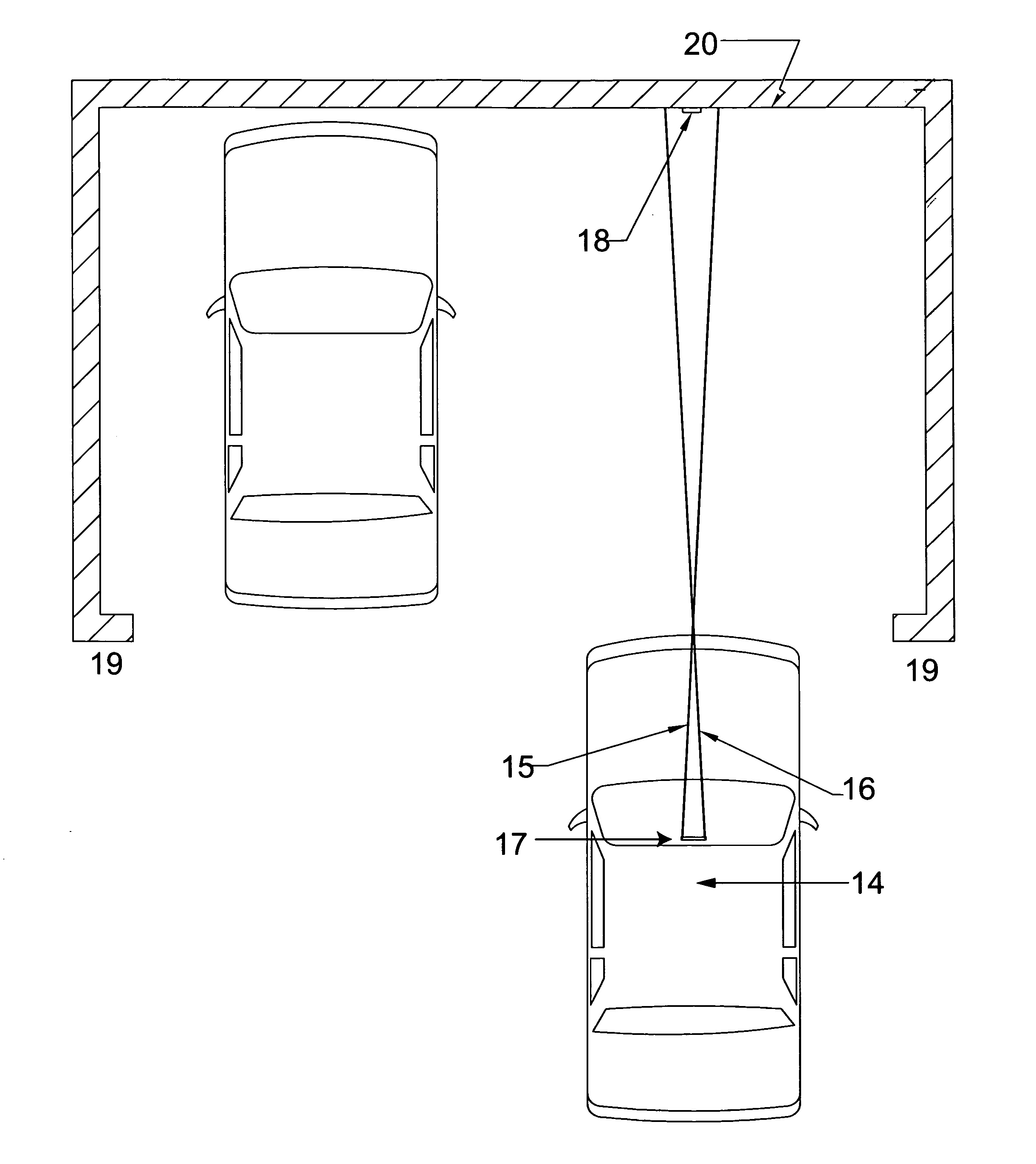Dual laser beam guidance and parking device
a laser beam guidance and parking device technology, applied in the direction of instruments, using reradiation, transportation and packaging, etc., can solve the problems of limited space for opening the vehicle door, damage to the vehicle door when opened, and becoming increasingly difficult to properly park the vehicle in the desired location, etc., to achieve simple and efficient, high accuracy in vehicle positioning, and simple design
- Summary
- Abstract
- Description
- Claims
- Application Information
AI Technical Summary
Benefits of technology
Problems solved by technology
Method used
Image
Examples
Embodiment Construction
[0036] Referring now to the drawings wherein the showings are for purposes of illustrating a preferred embodiment of the invention only and not for purposes of limiting the same;
[0037]FIG. 1 shows a top view of a vehicle, 14, projecting two laser beams, 15 and 16 that are guiding the vehicle driver at the entrance of a parking garage with sidewalls, 19, and forward wall, 20. The two laser beams, 15 and 16 must be guided by the vehicle operator such that they remain equidistantly placed around the vertical line, 18, throughout the parking approach, as shown in FIG. 4. The dual laser beam device, 17, can be mounted to the windshield, the dashboard of vehicle, 14, or incorporated into the rear view mirror mounting bracket.
[0038]FIG. 2 shows the vehicle, 14, with the dual laser device, 17, projecting two laser beams, 15 and 16, such that the laser beams, 15 and 16, have converged on the vertical line, 18, as shown in FIG. 5 thus achieving the pre-determined location.
[0039]FIG. 3 show...
PUM
 Login to View More
Login to View More Abstract
Description
Claims
Application Information
 Login to View More
Login to View More - R&D
- Intellectual Property
- Life Sciences
- Materials
- Tech Scout
- Unparalleled Data Quality
- Higher Quality Content
- 60% Fewer Hallucinations
Browse by: Latest US Patents, China's latest patents, Technical Efficacy Thesaurus, Application Domain, Technology Topic, Popular Technical Reports.
© 2025 PatSnap. All rights reserved.Legal|Privacy policy|Modern Slavery Act Transparency Statement|Sitemap|About US| Contact US: help@patsnap.com



